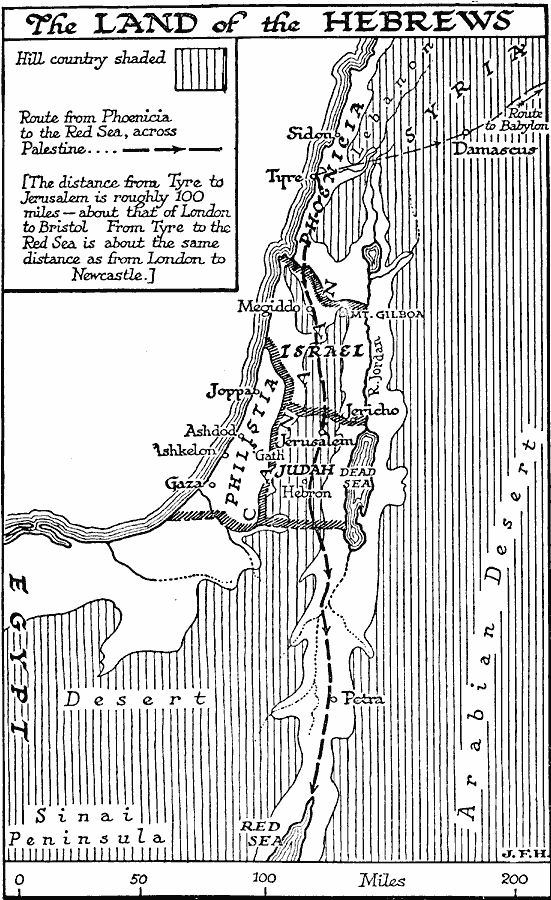Description: A map of the Hebrew lands in the time of King Solomon, around 971 to 931 BC. The map shows the land of Canaan, with the boundaries of Phoenicia, Israel, Philistia, and Judah, the important coastal cities of Sidon, Tyre, Joppa, Ashdod, Ashkelon, and Gaza, the trade routes from Tyre in Phoenicia to Babylon and to the Red Sea, and the cities along the routes, including Damascus, Megiddo, Jericho, Jerusalem, Hebron, and Petra. This map shows the extent of the hill country in the region with shading, and notes that the route distance from Tyre to Jerusalem is roughly 100 miles, about that of London to Bristol, and the distance between Tyre and the Red Sea is about the same distance as from London to Newcastle. "The position of Judea and of Jerusalem, its capital, is a peculiar one. The country is a band–shaped strip between the Mediterranean to the west and the desert beyond the Jordon to the east; through it lies the natural high–road between the Hittites, Syria, Assyria, and Babylonia to the north and Egypt to the south. It is a country predestined, therefore, to a stormy history." — Wells, 1921, pp. 217–218.
Place Names: Israel, Jerusalem, �Jericho, �Gaza, �Ashdod, �Tyr
ISO Topic Categories: boundaries,
location,
oceans,
inlandWaters
Keywords: Land of the Hebrews, physical, �political, physical features, country borders, boundaries,
location,
oceans,
inlandWaters, Unknown, 971–931 BC
Source: H. G. Wells, The Outline of History (New York, NY: The Macmillan Company, 1921) 219
Map Credit: Courtesy the private collection of Roy Winkelman |
|
